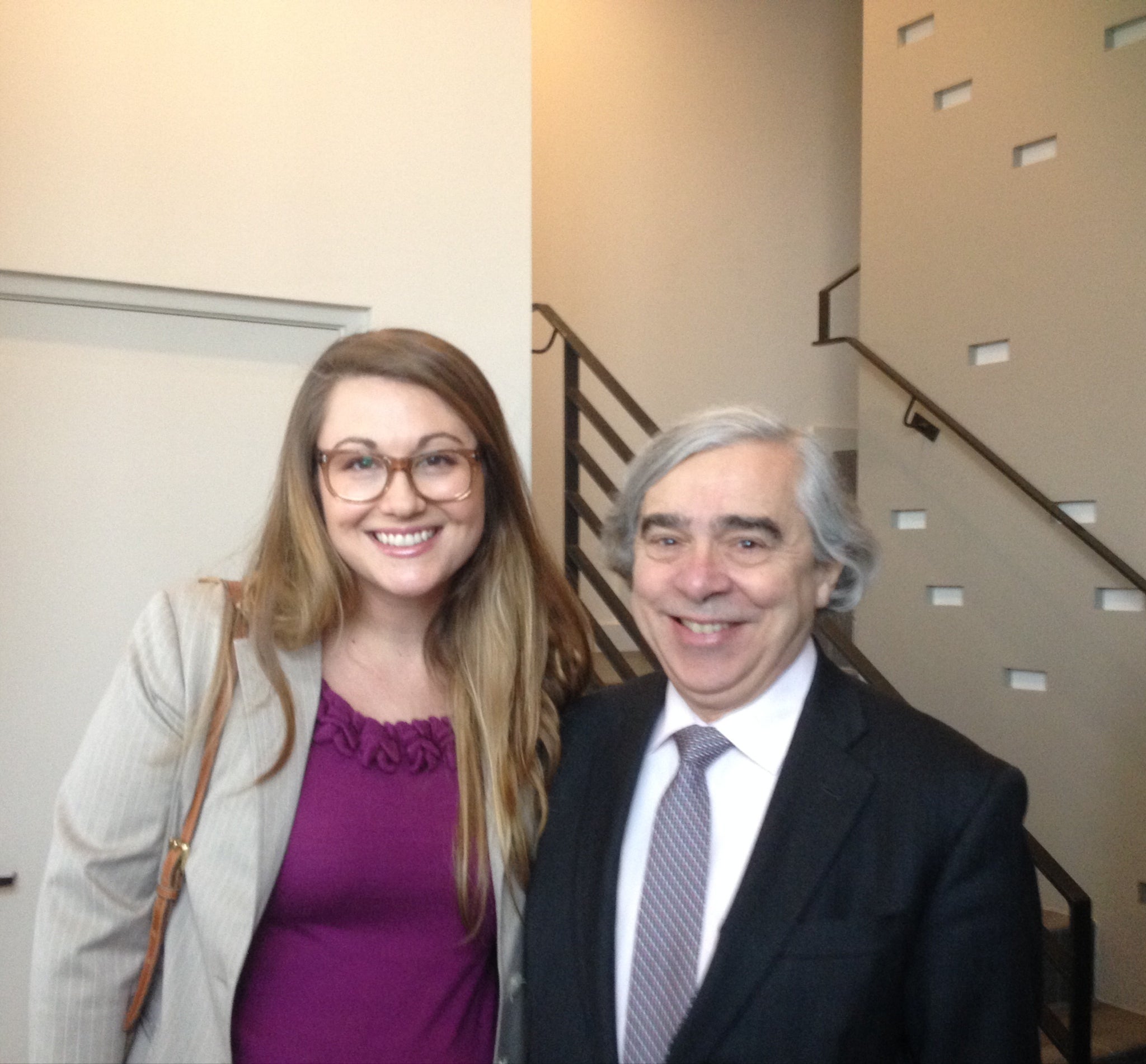Secretary Moniz Deems Austin’s Pecan Street ‘Very Impressive’
This commentary originally appeared on our Texas Clean Air Matters Blog.

Earlier this month, I had the privilege of presenting a short summary of EDF’s Smart Power Initiative to Dr. Ernest Moniz, the U.S. Secretary of Energy. As a group of over 30 people piled into the Pike Powers Laboratory (including the lab’s namesake), the Secretary made his way in, beelined for some coffee, and sat down to hear all about Austin’s innovative and collaborative energy “ecosystem.”
Present was the Mayor of Austin, Lee Leffingwell, various cleantech entrepreneurs sponsored by the Austin Technology Incubator (ATI), representatives from the State Energy Conservation Office (SECO), and the Governor’s office, among others.
Everyone had the opportunity to speak to the Secretary in a roundtable format about the work their particular company or group is doing to solve energy problems, and as EDF’s representative, I reported on our Smart Power work in Texas.
As I told Secretary Moniz, we are aiming to reduce harmful pollution from fossil fuels by prioritizing customer-facing, demand-side resources, like demand response (DR), energy efficiency, and renewables. Texas is the number one emitter of carbon in the nation (emitting twice as much as any other state) and at the same time we are reeling from the effects of climate change firsthand with a persistent drought and increasing temperatures. But we also have the greatest opportunity for solar power in the nation (though currently ranked behind New Jersey) and our demand response potential is the highest as well. Texas is the leading wind producer in the U.S., however, proving that innovation can happen when collaboration occurs. This is why Pecan Street’s residential energy data is necessary in making the case for new pathways to a cleaner future, sparking innovation and strengthening Texas’ economy.
Secretary Moniz expressed his enthusiasm for the Pecan Street, stating “Fantastic, I think it’s got to be the greatest, by far the most aggressive, project that I know of, at least in terms of the data collection. What came out was a view of a really dedicated, collaborative community in a vibrant investment ecosystem pushing clean energy. Austin is clearly a leader in this domain.” Overall, Moniz found the project “very impressive.”
After our conversation and a tour of the Lab, Secretary Moniz made his way to the University of Texas where he spoke to a packed auditorium. Qualifying a few questions from the audience with a smile, the Secretary reiterated the President’s “all-of-the-above” energy strategy, making it clear that the goal of the Administration is to move to a low-carbon future:
Very simple, we continue to reduce our oil dependence as we lower our oil imports…through alternative fuels, electric vehicles, and corporate average fuel economy (CAFE) standards. Across the board, that is what ‘all-of-the-above’ means. We are committed to low carbon, but we are also committed to all of the tools — research, development, and deployment — the option of all of those tools in a low-carbon marketplace. There’s no ambiguity about the need and commitment in this administration to lower greenhouse gas emissions, he said.
Secretary Moniz also noted how steeply the cost for renewable energy technologies has decreased over the past few years, which is critical if the U.S. intends to lead the global clean energy economy. “We should not take our eye off the ball in terms of what have been incredible cost reductions in these technologies. We want to be ahead of the train, not catching up to the caboose at the end,” he remarked.
As a nuclear physicist and Director of the Laboratory for Energy and the Environment at the Massachusetts Institute of Technology, Secretary Moniz understands what is happening in the new energy revolution, ensuring that we have a leader in the Obama Administration who gets it. While some see his “all-of-the-above” strategy as discouraging, from where I sat, it is refreshing and encouraging to have such a brilliant academic at the helm of America’s energy vision and not someone coming from the ranks of corporate interests. I have confidence he will be a valuable partner in helping EDF accomplish our Smart Power Initiative goals, which seek to transition our nation to a cleaner, more resilient and dynamic energy future.











